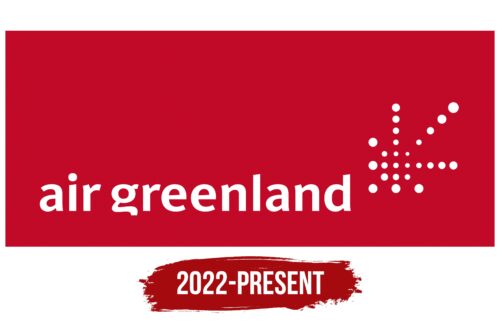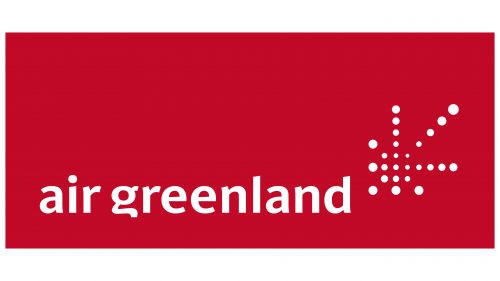Air Greenland: Brand overview
On November 7, 1960, Air Greenland was established under the name Grønlandsfly. When Greenland was still a Danish colony, the firm was founded by the government of Denmark to offer air transportation between its various regions. Since it was difficult to connect distant communities and cities due to the island’s tough geography and lack of a well-developed ground transportation network, the airline’s founding was a crucial milestone in developing its transportation infrastructure.
The airline regularly started flying Douglas DC-4 planes between Greenland and Denmark in 1962. Establishing the first direct air link between the metropole and its autonomous area and expanding cultural and economic relations between Denmark and Greenland made this event historic. It made it easier for people to travel between the two regions and exchange commodities.
The company was once known as Grønlandsfly Greenlandair in 1965 and changed to Greenlandair in 1967. These adjustments were related to the business’s strategy of growing gradually and aiming for recognition in the global air transport industry.
The airline started updating its fleet in the 1970s when it bought De Havilland Canada Dash 7 aircraft specially designed to fly in Greenland’s harsh weather. These aircraft enabled the airline to enhance passenger service and grow its route network.
When the Kingdom of Denmark granted Greenland considerable autonomy in 1979, the company’s ownership structure was altered. The corporation relocated its headquarters from Copenhagen to Nuuk, the capital of Greenland, and the government of Greenland took a controlling stake in the business.
The airline continued to update its fleet in the 1980s, purchasing Boeing 737 and Sikorsky S-61 aircraft. As a result, it increased its market share in the European airline industry and began operating scheduled flights to Iceland and the Faroe Islands.
When the company changed its name to Air Greenland in 1998, a new era in its history began. Under the new moniker, the airline continued growing, updating its fleet and expanding its route system.
The company joined the International Air Transport Association (IATA) in 2002 as a sign of its adherence to the aviation sector’s highest safety and service standards.
2010, the company commemorated its fiftieth anniversary, solidifying its position as the premier airline in Greenland and a major participant in the North Atlantic air transport industry. After that, the business kept growing and modernizing to offer top-notch services and increase its global footprint.
The company started modernizing its fleet in 2012, progressively swapping out its antiquated aircraft with more effective and contemporary types. By acquiring multiple Airbus A330-200 aircraft, the business could extend its route network and conduct long-haul flights.
Icelandair and the company agreed to a code-share arrangement in 2013. Traveling between Greenland, Iceland, and other European nations was made easier and more convenient for passengers of both airlines because of this enlarged route network.
The airline marked its 55th anniversary in 2015, demonstrating its longevity as a dependable and steady operator essential to maintaining Greenland’s transportation accessibility.
In 2017, the company implemented a development plan to boost operational effectiveness, streamline the route network, and raise the standard of passenger service. As part of this strategy, the airline updated its corporate identity and aircraft livery, rebranded, and deployed new information technology and management systems.
2018, the company signed code-share agreements with SAS and Air Iceland Connect, broadening its collaboration with other carriers. Through these alliances, travelers to Scandinavia and other parts of Europe may take advantage of the airline’s increased number of routes and easy connections.
The airline received its first Airbus A330-800neo aircraft in 2019 as it continued to modernize its fleet. This cutting-edge, effective aircraft improved passenger comfort on long-haul flights while increasing operating efficiency.
Notwithstanding the difficulties brought on by the worldwide pandemic, the company carried out its objective in 2020 and 2021 of continuing to offer dependable air transportation to Greenlanders and preserving the island’s accessibility. The airline implemented improved safety and sanitary protocols on its flights and airports to adapt to the changing circumstances.
Meaning and History
What is Air Greenland?
Greenland’s national airline, based in Nuuk, provides essential air service to remote communities scattered across the island’s vast and rugged terrain. The company operates a diverse fleet of aircraft, including turboprops such as the Dash 8 and DHC-7, as well as helicopters, which are ideal for navigating the challenging weather conditions and landing on the short runways typical of the region. The carrier connects towns and villages within the country and offers international flights to Denmark and Iceland, serving as a crucial link between Greenland and the outside world.
2002 – today
The base of the Air Greenland logo is a large dark red trapezoid with one sharp corner. On the right side is the “ice flower,” symbolizing 26 varying-sized white dots. These mini-circles are arranged to form a figure resembling a downward-pointing arrow or jellyfish. The flower with ice spikes indicates that the airline is adapted to work in difficult Arctic conditions, as it operates flights between populated areas in Greenland. The brand name is written in lowercase white letters with curved ends, creating a serif-like pattern.
The dark red trapezoid conveys strength and stability, emphasizing the airline’s adaptability to harsh conditions. The white dots symbolize ice and are a contrasting element that increases the logo’s visibility. Arranging the dots in the shape of an arrow or jellyfish gives the logo an element of direction and movement, subtly alluding to the airline’s experience in Arctic navigation.
FAQ
Does Air Greenland fly to us?
Air Greenland does not currently offer direct flights to the United States. Instead, the airline focuses on flights within the North Atlantic region. One of their main services is the year-round flight from Keflavík Airport in Iceland to Kangerlussuaq in Greenland. Kangerlussuaq is a key hub in Greenland’s aviation network, mainly because it used to be a military base, and its weather conditions make it one of Greenland’s most accessible airports.
For U.S. travelers wanting to visit Greenland, the easiest way usually involves flying to Iceland first. Once there, passengers can connect to an Air Greenland flight to Kangerlussuaq. Although this means an extra leg in their travel, Keflavík Airport offers good connections to several major U.S. cities, making the trip to Greenland quite manageable.
What is the code for Air Greenland?
Air Greenland uses several codes that help identify and manage its flights worldwide. These codes are used to book flights, create schedules, and track planes.
- IATA Code: GL
The IATA code for Air Greenland is GL. This two-letter code appears on tickets and schedules and helps passengers and the airline organize flights.
- ICAO Code: GRL
Air Greenland’s ICAO code is GRL. This three-letter code is used globally to manage international flights and air traffic control. While it’s crucial for airline operations, passengers generally do not need to know it.
- Callsign: GREENLAND
The airline’s callsign is GREENLAND. Air traffic controllers use this name when they talk to Air Greenland planes.
These codes are important because they help ensure Air Greenland’s operations run smoothly and safely. They make scheduling flights, selling tickets, and tracking aircraft locations easier.
Who owns Air Greenland?
Air Greenland is owned by the Greenland Self-Government, which holds all the shares, making it a public limited company. This means the local government fully controls the airline. It is managed through six parts, each likely covering areas like daily operations and long-term planning. This structure helps the airline support Greenland’s transportation needs and economic goals, ensuring it connects locally and internationally well.
Where is Air Greenland based?
Air Greenland’s headquarters are at Nuuk Airport in Nuussuaq, Greenland. This airport is the main center for the airline’s operations, where it manages its flights and fleet. The airline uses nine fixed-wing aircraft and 19 helicopters to fly to 16 destinations, which helps connect Greenland internally and with other countries.
Leading Air Greenland are Bodil Marie Damgaard, the Chairwoman of the Board, and Jacob Nitter Sørensen, the CEO. They guide the airline’s strategy and ensure it achieves its goals in service and growth.





